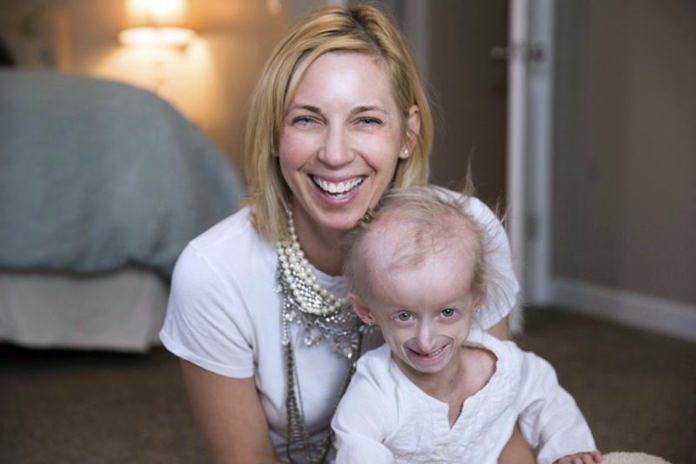
Chicago (AP) — Children with a rare, incurable disease that causes rapid aging and early death may live longer if treated with an experimental drug first developed for cancer patients, a study suggests.
The small, preliminary study isn’t proof the drug works and it found only a small benefit: Treated children with the disease progeria were more likely than others to survive during the two-year study. But some kids taking the drug in this and other studies have lived into their late teens. Researchers and others say the results suggest a potential breakthrough for a heartbreaking condition that typically kills kids before they reach adulthood.
“Anything we can do to try to provide them hope of a longer life is well worth doing and well worth celebrating,” said Dr. Francis Collins, director of the United States National Institutes of Health, who was not part of the new study. A geneticist, Collins led laboratory experiments that in 2003 identified the genetic basis for the disease, formally known as Hutchinson-Gilford progeria.
Among 27 children with progeria who got the drug lonafarnib, one died during the 2007-2010 study. That’s compared with nine of 27 untreated children with the disease. Thirteen of the treated children are still alive; most began taking other experimental drugs too.
“For the first time ever we have a drug that is shown to extend lifespan for children with progeria,” said lead author Dr. Leslie Gordon of Brown University. Her son was a study participant and died in 2014 at age 17.
The study, conducted at Boston Children’s Hospital, was unusually designed, comparing children given the drug with other progeria patients worldwide who weren’t enrolled in the study. The untreated kids were matched as closely as possible with study participants by age, gender and other characteristics, but they weren’t a standard control group and didn’t receive dummy medication.
That design weakens the study conclusions, said Dr. Howard Worman, a Columbia University biologist. “You really cannot say anything ‘worked’ without a contemporary placebo control.”
The children in the study were also involved in earlier research testing the same drug combined with two others. Within a period of about five years, survival was extended by about 19 months. It wasn’t clear if all three drugs or just one or two of them contributed to the improvement. Lonafarnib also appeared to reduce blood vessel damage.
Average life expectancy for progeria children is about 14 years. Though many die younger, usually from heart attacks or strokes, some lonafarnib-treated kids have lived to their late teens.
For parents, who want to see their children grow up, that sliver of extra time is a bittersweet blessing.
“If you’re a mom and you’re told that life expectancy is 13 years, that 1.6 years is gold,” said Heather Unsinger. Her 7-year-old daughter, Carly, was a study participant and has been taking lonafarnib since age 3. “But it’s really hard to jump up and down.”
Affected children are typically small, bald and fragile-looking but intellectually normal. Carly “has full-throttle dreams” and envisions becoming an art teacher one day, her mom said.
Other kids “always think I’m a baby,” Carly said. But “I’m a regular kid.”
Progeria is caused by a mutation in a gene that regulates production of a protein that helps shape and support the nucleus of cells throughout the body. In normal aging, the protein accumulates in cells but in children with progeria, an abnormal buildup occurs that severely damages cells. Lonafarnib helps block that abnormal buildup.
The disease affects about 1 in 20 million people. It is a chance mutation and isn’t inherited. Affected children are born looking healthy, but fail to grow normally, lose body fat and hair and develop aged-looking skin, stiff joints and diseased arteries.
Lonafarnib was initially developed as a potential cancer treatment but without much success. Schering Plough/Merck supplied the study drug; the research was paid for by the Progeria Research Foundation.
 |
 |





